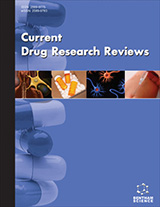Abstract
Introduction and Aim: Esophageal adenocarcinoma (EAC) mortality continues to increase across the world. This meta-analysis was aimed to investigate the relationship between proton pump inhibitors (PPIs) and the risk of EAC.
Methods: This meta-analysis was done as per the PRISMA checklist using relevant keywords. To this end, an extensive search was done on 29/6/2022 in EMBASE, Web of Science (ISI), PubMed, and Scopus. In this study, 95% confidence interval (CI) and standardized mean difference (SMD) were used to estimate the overall effect size. Analysis of the odds ratio (OR) for EAC was done using a random effects model.
Results: A total of 20 studies were included in the review. Compared to the group that received PPIs, the OR of EAC in the recipients of the PPIs group was obtained at 0.67 (95% CI = 0.39-1.29, P = 0.240). The meta-regression, including year, follow-up time, study design, sample size, quality of the study, study period, and geographical location, demonstrated no source of heterogeneity (P > 0.10).
Conclusion: No significant relationship was found between PPIs use and the risk of EAC. Accordingly, PPIs do not have a protective or risk factor effect on EAC.
[http://dx.doi.org/10.21037/acs.2017.03.03] [PMID: 28447001]
[http://dx.doi.org/10.21037/jgo-2019-gi-08] [PMID: 34422398]
[http://dx.doi.org/10.1111/j.1572-0241.2006.00626.x] [PMID: 16863542]
[http://dx.doi.org/10.7759/cureus.12759] [PMID: 33614352]
[http://dx.doi.org/10.1097/MEG.0000000000001198] [PMID: 30028775]
[http://dx.doi.org/10.1136/gutjnl-2013-305997] [PMID: 24221456]
[http://dx.doi.org/10.3748/wjg.v25.i25.3231] [PMID: 31333314]
[http://dx.doi.org/10.1371/journal.pone.0169691] [PMID: 28072858]
[http://dx.doi.org/10.7326/0003-4819-135-11-200112040-00010] [PMID: 11730399]
[http://dx.doi.org/10.1016/0197-2456(95)00134-4] [PMID: 8721797]
[http://dx.doi.org/10.1101/2021.02.15.21251618]
[PMID: 9237063]
[http://dx.doi.org/10.1001/jamanetworkopen.2021.13739] [PMID: 34132796]
[http://dx.doi.org/10.1111/j.1365-2036.2007.03579.x] [PMID: 18047565]
[http://dx.doi.org/10.1158/1055-9965.EPI-08-0764] [PMID: 19190141]
[http://dx.doi.org/10.1097/MEG.0b013e3283595086] [PMID: 23022985]
[http://dx.doi.org/10.1016/j.canep.2019.101585] [PMID: 31445426]
[http://dx.doi.org/10.1001/jama.1995.03530060048032] [PMID: 7629956]
[http://dx.doi.org/10.1155/2022/4093595] [PMID: 35801003]
[http://dx.doi.org/10.1002/(SICI)1099-1557(200003/04)9:2<149:AID-PDS481>3.0.CO;2-1] [PMID: 19025815]
[http://dx.doi.org/10.1097/00008469-200006000-00006] [PMID: 10954258]
[http://dx.doi.org/10.1159/000520924] [PMID: 34929693]
[http://dx.doi.org/10.1016/j.canep.2018.02.004] [PMID: 29477057]
[http://dx.doi.org/10.3390/ph15050517] [PMID: 35631344]
[http://dx.doi.org/10.1111/j.1365-2036.2006.02825.x] [PMID: 16556174]
[http://dx.doi.org/10.1111/j.1572-0241.2007.01234.x] [PMID: 17459024]
[http://dx.doi.org/10.1016/S0016-5085(14)60442-X]
[http://dx.doi.org/10.1136/gut.2005.086579] [PMID: 16785284]
[http://dx.doi.org/10.5694/j.1326-5377.2004.tb05991.x] [PMID: 15089728]
[http://dx.doi.org/10.1111/apt.12693] [PMID: 24617286]
[http://dx.doi.org/10.1016/S0140-6736(18)31388-6] [PMID: 30057104]
[http://dx.doi.org/10.1038/ajg.2011.130] [PMID: 21483461]
[http://dx.doi.org/10.1016/j.cgh.2012.11.014] [PMID: 23200977]
[http://dx.doi.org/10.1016/j.gie.2015.12.036] [PMID: 26772891]
[http://dx.doi.org/10.1158/1940-6207.CAPR-20-0274] [PMID: 32998939]
[http://dx.doi.org/10.1136/bmjopen-2014-006640] [PMID: 25633286]
[http://dx.doi.org/10.1016/j.cgh.2009.06.001] [PMID: 19523538]
[http://dx.doi.org/10.1053/j.gastro.2010.02.045] [PMID: 20188100]
[http://dx.doi.org/10.1111/apt.14895] [PMID: 29956826]
[http://dx.doi.org/10.1111/1751-2980.12457] [PMID: 28188977]
[http://dx.doi.org/10.1371/journal.pone.0215052] [PMID: 30978228]
[http://dx.doi.org/10.1111/biom.12817] [PMID: 29141096]
[http://dx.doi.org/10.1016/j.ejca.2021.07.030] [PMID: 34481369]
[http://dx.doi.org/10.1016/j.cgh.2017.11.044] [PMID: 29199147]
[http://dx.doi.org/10.1159/000443155] [PMID: 27722152]
[http://dx.doi.org/10.1016/j.asjsur.2016.10.005] [PMID: 27986415]



























